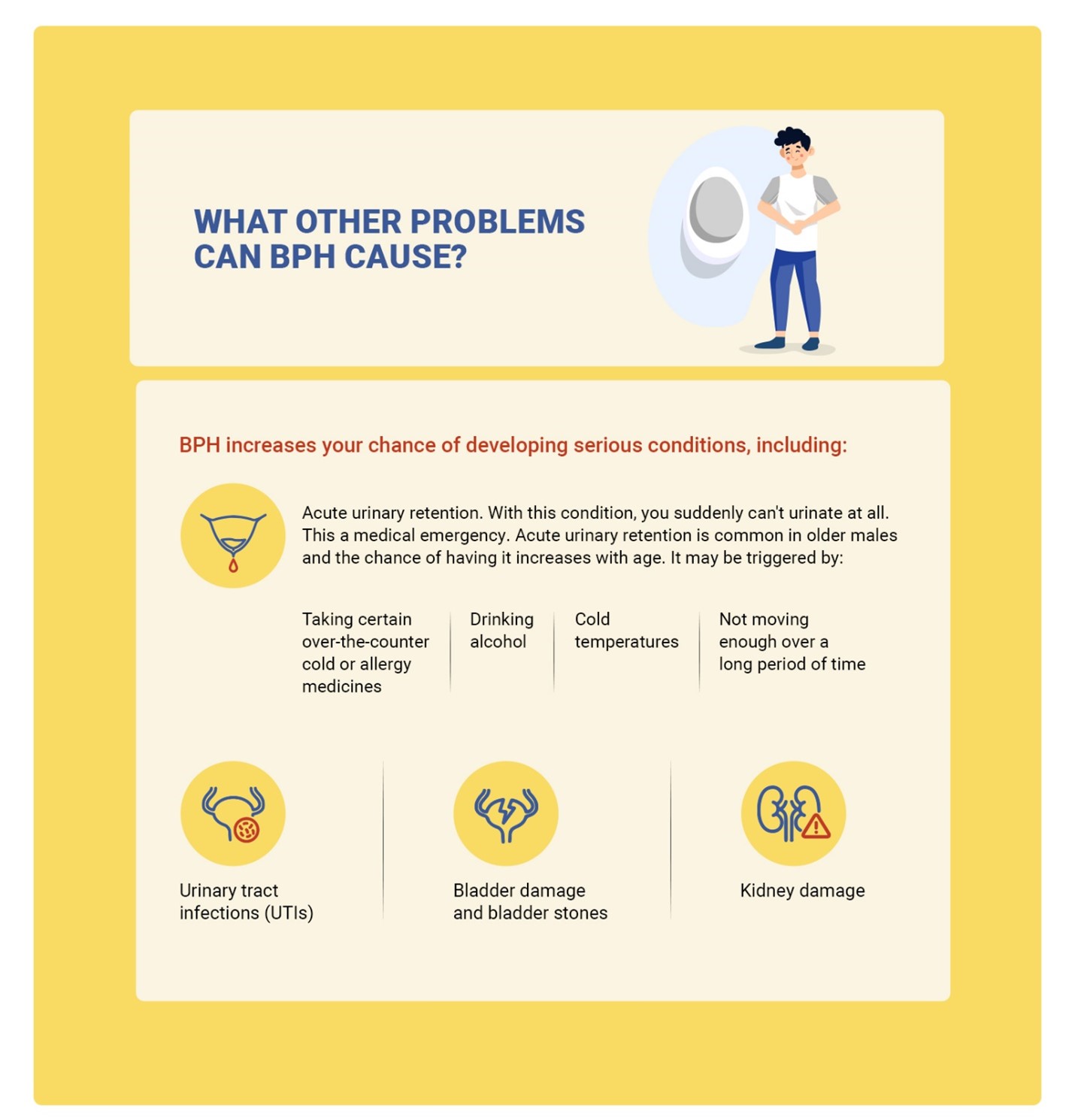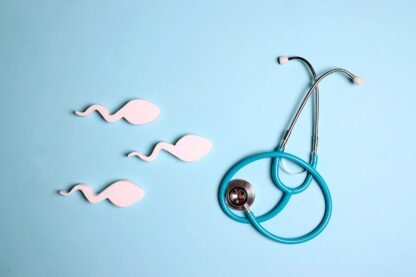Unravelling BPH and the Prostate Health
4 min read
How does the prostate work?
The prostate is a part of the male reproductive system. The prostate’s main job is to make fluid for semen. It is about the size of a walnut and weighs an ounce or so. It sits below the bladder and in front of the rectum. It goes around a tube called the urethra. The urethra carries urine from the bladder and out through the penis.
What is Benign Prostatic Hyperplasia (BPH)?
Benign prostatic hyperplasia is when the prostate and surrounding tissue expands. The prostate goes through two main growth periods as a man age. The first is early in puberty, when the prostate doubles in size. The second begins around age 25 and continues during most of a man's life. As you age, your prostate may get larger. BPH is when it gets large enough to cause problems.
As the prostate enlarges, it presses against the urethra. These problems cause many of the lower urinary tract symptoms (LUTS) of BPH.
Who is at risk for BPH?
- Men over the age of 50 as the risk for BPH rises with age
- Men whose fathers had BPH
- Men who are overweight or obese
- Men who don’t stay active
- Some men with erectile dysfunction (ED)
What are the symptoms of BPH?
When the prostate is enlarged, it can bother or block the bladder. Needing to pass urine often is a common symptom of BPH. This might include the need to pass urine as often as every one to two hours, mainly at night.
Other symptoms of BPH are listed below:
- Incomplete emptying: the feeling your bladder is full, even after passing urine.
- Frequency: the need to pass urine often, about every one to two hours.
- Intermittency: the need to stop and start several times when passing urine.
- Urgency: feeling the urgent need to pass urine as if you can’t wait.
- Weak stream: a weak urine flow.
- Straining: trouble starting to pass urine or the need to push or strain to pass urine.
- Nocturia: the need to wake up at night more than two times to pass urine.
What are the causes of BPH?
The causes of BPH are not clear. It mainly occurs in older men. Hormone changes are thought to play a role.
Hormones from the testis may be the main factor. For example, as men age, the amount of active testosterone in the blood declines. Estrogen levels stay the same. BPH may occur when these hormone changes trigger prostate cell growth. Another theory is about the role of dihydrotestosterone (DHT). This male hormone supports prostate development. Some studies show that older men have higher levels of DHT. Testosterone levels go down.
How BPH is diagnosed?
There are many tests for BPH. The following tests are used to diagnose and track BPH.
1. Symptom score index
If you have any urinary changes or symptoms, your doctor may talk to you about the BPH Symptom Score Index.
This is often the first step to diagnose BPH. The score can rate BPH as being mild to severe. This is sometimes also called the International Prostate Symptom Score (IPSS.) Rate your symptoms with the BPH Symptom Score Index now!
2. Physical Exam
A digital rectal exam (DRE) is often the next step. During a DRE, you lie on your side or bend over. The doctor inserts a gloved, lubricated finger into your rectum to feel the back wall of the prostate gland. The health care provider is looking for enlargement, tenderness, lumps or hard spots. This 10-15 second exam is an important way to find problems.
3. Urine tests
These tests are done to measure how well you release urine. This shows the doctor if the urethra is blocked or obstructed. There are several types:
- Urinalysis tests your urine sample to check for important things such as blood, signs of infection, glucose (sugar), protein and other factors that can tell your urologist the cause of your symptoms.
- Post-void residual volume (PVR) measures urine left in the bladder after passing urine. This is done to diagnose the problem. It may also be done before surgery.
- Uroflowmetry measures how fast urine flows. This is done to diagnose the problem. It may also be done before surgery.
- Urodynamic pressure flow study tests pressure in the bladder during urination.
4. Scans
These tests are done to see the size and shape of the prostate. Some BPH scans include:
- Ultrasounds look inside the body and see the size and shape of the prostate.
- Cystoscopy is an exam used to look at the urethra or bladder with a scope.
- Magnetic resonance imaging (MRI) and computed tomography (CT) shows exactly how and where the prostate is enlarged.
5. Blood Tests
Prostate-specific antigen (PSA) blood tests - when the prostate is healthy, very little PSA is found in the blood. A rapid rise in PSA may be a sign that something is wrong.
How BPH is treated?
There are many treatments for BPH. You and your health care provider will decide together which option is right for you. Mild cases may need no treatment at all. In some cases, minimally invasive procedures (surgery without anesthesia) are good choices. And sometimes a combination of treatments works best.
The main treatments for BPH are:
- Active Surveillance - BPH will be closely watched but not actively treated and may be monitored with regular visits to your urologist. Diet and exercise are often recommended as a way to prevent or manage symptoms.
- Prescription Drugs - To relax the muscles of the prostate and bladder to reduce BPH symptoms and also to shrink the prostate size.
- Less invasive surgery
- More invasive surgery
Lifestyle changes for BPH Management

Avoid fizzy drinks, alcohol, caffeine and artificial sweeteners.
1

Drinking less fluid in the evening.
2

Remember to empty your bladder
3

Double voiding
4

Checking your medicines
5

Eating more fiber
6

Using pads or a sheath
7

Bladder training
8



